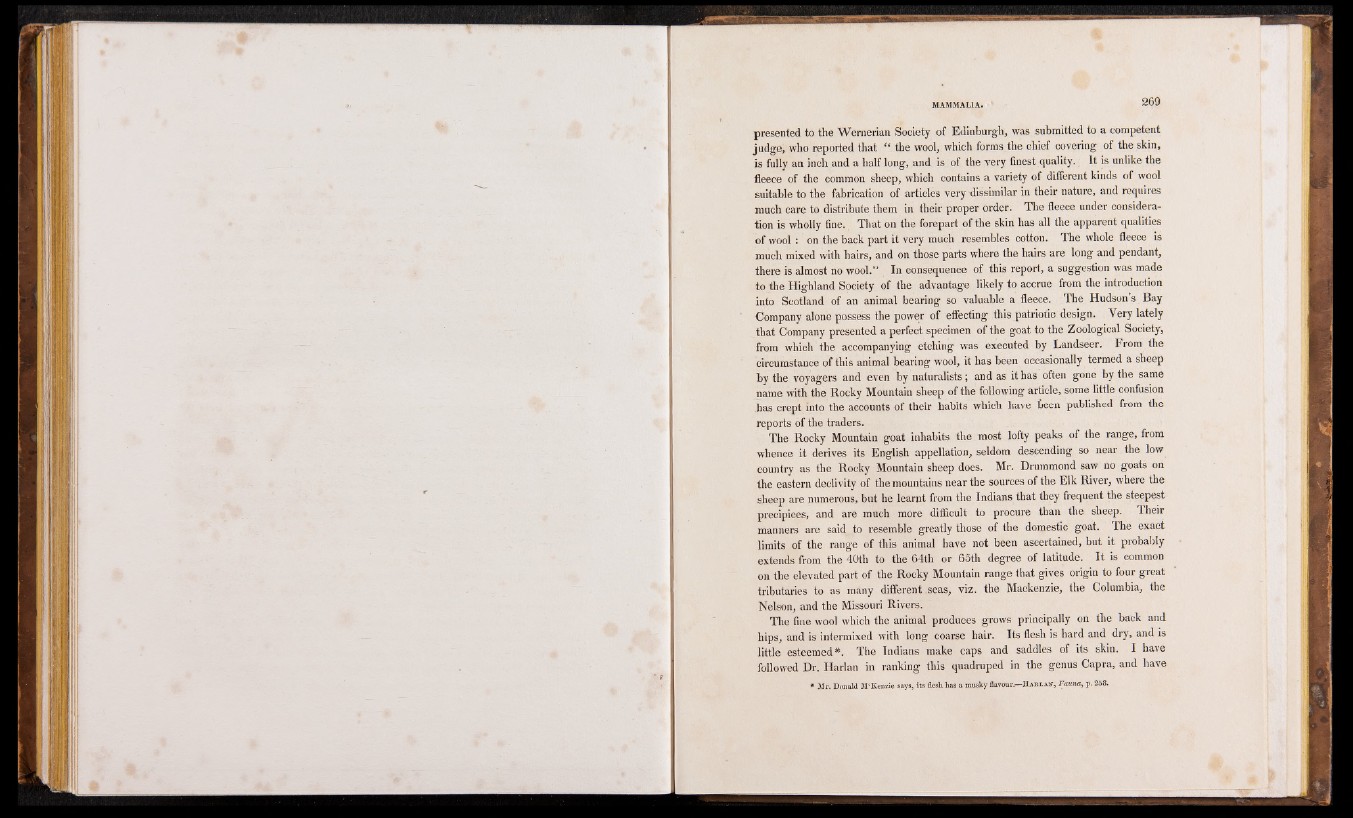
MAMMALIA. 269
presented to the Wernerian Society of Edinburgh, was submitted to a competent
judge, who reported that the wool, which forms the chief covering of the skin,
is fully an inch and a half long, and is of the very finest quality. It is unlike the
fleece of the common sheep, which contains a variety of different kinds of wool
suitable to the fabrication of articles very dissimilar in their nature, and requires
much care to distribute them in their proper order. The fleece under consideration
is wholly fine. That on the forepart of the skin has all the apparent qualities
of wool : on the back part it very much resembles cotton. The whole fleece is
much mixed with hairs, and on those parts where the hairs are long and pendant,
there is almost no wool.” In consequence of this report, a suggestion was made
to the Highland Society of the advantage likely to accrue from the introduction
into Scotland of an animal bearing so valuable a fleece. The Hudson s Bay
Company alone possess the power of effecting this patriotic design. Very lately
that Company presented a perfect specimen of the goat to the Zoological Society,
from which the accompanying etching was executed by Landseer. From the
circumstance of this animal bearing wool, it has been occasionally termed a sheep
by the voyagers and even by naturalists) and as it has often gone by the same
name with the Rocky Mountain sheep of the following article, some little confusion
has crept into the accounts of their habits which have been published from the
reports of the traders.
The Rocky Mountain goat inhabits the most lofty peaks of the range, from
whence it derives its English appellation, seldom descending so near the low
country as the Rocky Mountain sheep does. Mr. Drummond saw no goats on
the eastern declivity of the mountains near the sources of the Elk River, where the
sheep are numerous, but he learnt from the Indians that they frequent the steepest
precipices, and are much more difficult to procure than the sheep. Their
manners are said to resemble greatly those of the domestic goat. The exact
limits of the range of this animal have not been ascertained, but it probably
extends from the 40tli to the 64th or 65th degree of latitude. It is common
on the elevated part of the Rocky Mountain range that gives origin to four great
tributaries to as many different .seas, viz. the Mackenzie, the Columbia, the
Nelson, and the Missouri Rivers.
The fine wool which the animal produces grows principally on the back and
hips, and is intermixed with long coarse hair. Its flesh is hard and dry, and is
little esteemed*. The Indians make caps and saddles of its skin. I have
followed Dr. Harlan in ranking this quadruped in the genus Capra, and have
* Mr. Donald M‘Kenzie says, its flesh has a musky flavour.—H a r l a n , Fauna, p. 258.